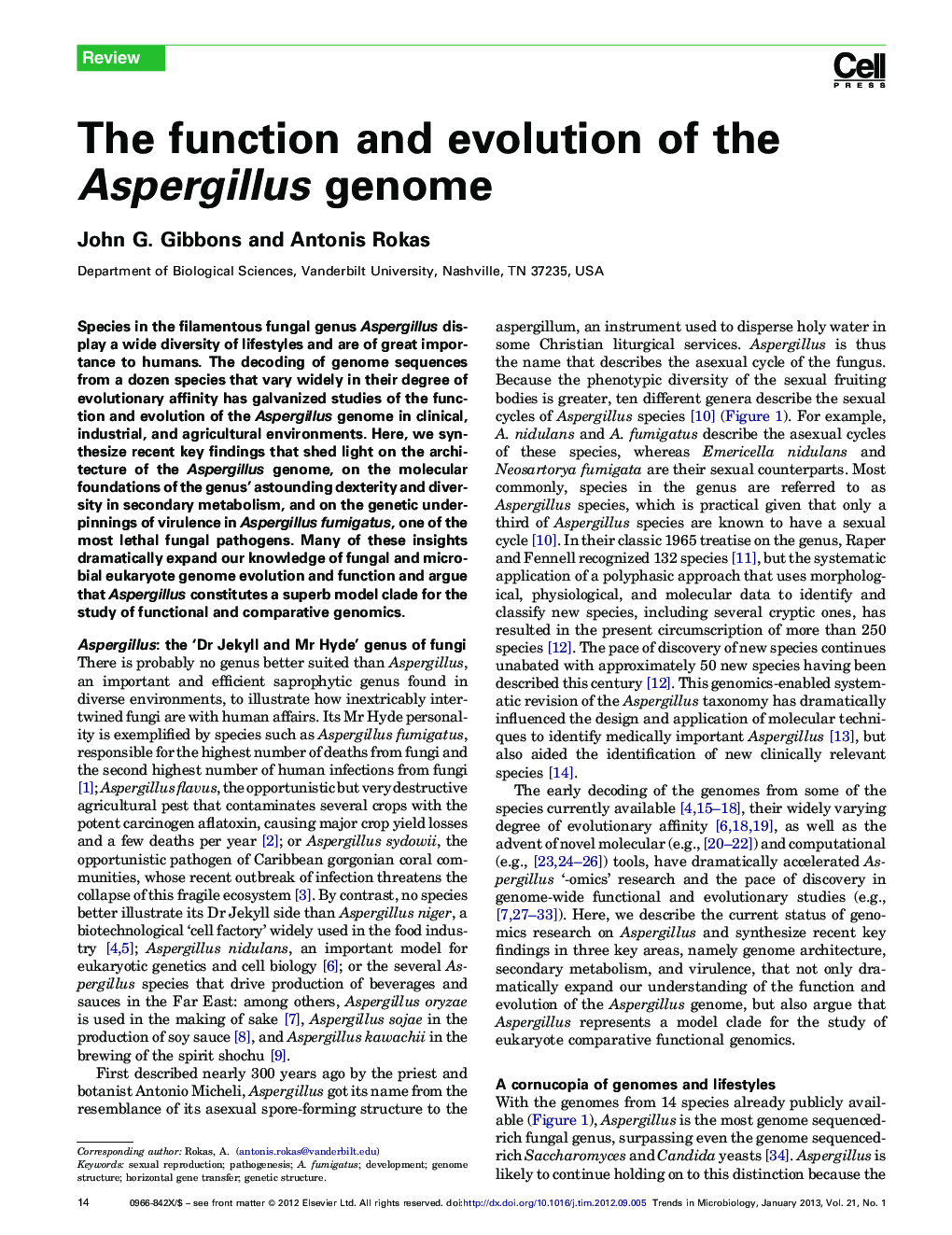| Article ID | Journal | Published Year | Pages | File Type |
|---|---|---|---|---|
| 3422060 | Trends in Microbiology | 2013 | 9 Pages |
Species in the filamentous fungal genus Aspergillus display a wide diversity of lifestyles and are of great importance to humans. The decoding of genome sequences from a dozen species that vary widely in their degree of evolutionary affinity has galvanized studies of the function and evolution of the Aspergillus genome in clinical, industrial, and agricultural environments. Here, we synthesize recent key findings that shed light on the architecture of the Aspergillus genome, on the molecular foundations of the genus’ astounding dexterity and diversity in secondary metabolism, and on the genetic underpinnings of virulence in Aspergillus fumigatus, one of the most lethal fungal pathogens. Many of these insights dramatically expand our knowledge of fungal and microbial eukaryote genome evolution and function and argue that Aspergillus constitutes a superb model clade for the study of functional and comparative genomics.
